Who was Leonardo da Vinci's Love? His life partner went by many names: Gian Giacomo Caprotti da Oreno aka: Salai, Salino, Andrea Salai, and Giacomo. In this lifetime I loved Giacomo Forbes…. And the interesting synchronicities between the two Giacomos are certainly NOT lost on me!
 Interestingly, Giacomo has the same name, physical appearance, and country of origin, same EVERYTHING, as Leonardo da Vinci's lover and muse, Giacomo Andrea Salai. Giacomo swept me off of my feet (Just like Giacomo Casanova would) from day one. He told me he loved IMMEDIATELY (the day after our first date) which incidentally was on 11-22-2021. Soon, however, I discovered Giacomo and I had a similar dynamic to Leonardo and his Giacomo and in the words of Leonardo da Vinci:
Interestingly, Giacomo has the same name, physical appearance, and country of origin, same EVERYTHING, as Leonardo da Vinci's lover and muse, Giacomo Andrea Salai. Giacomo swept me off of my feet (Just like Giacomo Casanova would) from day one. He told me he loved IMMEDIATELY (the day after our first date) which incidentally was on 11-22-2021. Soon, however, I discovered Giacomo and I had a similar dynamic to Leonardo and his Giacomo and in the words of Leonardo da Vinci:
“SALAI IOUOREPASERECOENOGUERE. NOPIUGERA. HEIOMARENDO”
which translates to
“SALAI, I WANT TO REST, NO MORE WARS. NO MORE WAR. I SURRENDER.”
I finally left Giacomo and left Austin. We would never be at peace with each other, in any lifetime. Tired of being sick and tired, I threw out everything I owned out and took only what fit in my car and drove home to Oregon…
Rewind 500 years…
"—Thief, liar, obstinate, glutton." Leonardo's longest relationship and the person mentioned most in his notebooks.
Giacomo created paintings under the name of Andrea Salaì. He began living with Leonardo at age 10 and became his student, lifelong servant, and companion.

Salaì as Narcissus painted by Giovanni Antonio Boltraffio.
This painting of Giacomo Andrea Salai as Narcissus was painted in the school of Leonardo da Vinci by one of da Vinci's main pupils, Giovanni Antonio Boltraffio. The myth of Narcissus has inspired artists for at least two thousand years. Narcissus is a character from Greek mythology who falls in love with his own reflection and whose tale has given us the term "narcissist".
One day Narcissus was walking in the woods when Echo, a mountain nymph, saw him, fell deeply in love, and followed him. Narcissus sensed he was being followed and shouted "Who's there?". Echo repeated "Who's there?" She eventually revealed her identity and attempted to embrace him. He stepped away and told her to leave him alone. She was heartbroken and spent the rest of her life in lonely glens until nothing but an echo sound remained of her. Nemesis (as an aspect of Aphrodite), the goddess of revenge, noticed this behavior after learning the story and decided to punish Narcissus.
Once, during the summer, he was getting thirsty after hunting, and the goddess lured him to a pool where he leaned upon the water and saw himself in the bloom of youth. Narcissus did not realize it was merely his own reflection and fell deeply in love with it, as if it were another young man. Unable to leave the allure of his image, he eventually realized that his love could not be reciprocated and he melted away from the fire of passion burning inside him, eventually turning into a gold and white flower.

Bacchus painted by Leonardo da Vinci
Giacomo was the model for the Mona Lisa, St. John the Baptist, Bacchus, and the Salvatore Mundi among others. Interestingly, the letters which form "Mona Lisa" can be rearranged to form "Mon Salaì".
Salai means: "Little Devil" "The Unclean one".

Salvator Mundi by Leonardo da Vinci
In Leonardo's own words about Giacomo:
"Giacomo came to live with me on St.-Mary Magdalen’s (July 22, 1490) aged 10 years. The second day I had two shirts cut out for him, a pair of hose, and a jerkin, and when I put aside some money to pay for these things he stole 4 Lire -the money out of the purse; and I could never make him confess, though I was quite certain of the fact.—Thief, liar, obstinate, glutton.
The day after, I went to sup with Giacomo Andrea, and the said Giacomo supped for two and did mischief for four; for he brake 3 cruets, spilled the wine, and after this came to sup where I..."
"On the 26th January following, I, being in the house of Messer Galeazzo da San Severino, was arranging the festival for his jousting, and certain footmen having undressed to try on some costumes of wild men for the said festival, Giacomo went to the purse of one of them which lay on the bed with other clothes, 2 lire 4 S, and took out such money as was in it."
"On the 7th day of September he stole a silver point of the value of 22 soldi from Marco who was living with me, 4 lire this being of silver; and he took it from his studio, and when the said Marco had searched for it a long while he found it hidden in the said Giacomo's box 4 lire."
"Again, on the 2nd April, Giovan Antonio having left a silver point on a drawing of his, Giacomo stole it, and this was of the value of 24 soldi 1 lira."
“SALAI IOUOREPASERECOENOGUERE. NOPIUGERA. HEIOMARENDO”
“SALAI, I WANT TO REST, NO MORE WARS. NO MORE WAR. I SURRENDER.”

Saint John the Baptist, painted by Leonardo
Giacomo earned the nickname Salaì because of his lying, thievery and breaking things. The name Salaì is used more than any other in all of Leonardo's journals.

The Mona Lisa

Angelo Incarnato, drawing of Salaì by Leonardo
He stayed with Leonardo for almost 30 years. Leonardo left half of his vineyard to Giacomo upon his death. It is believed that upon Leonardo's death in 1519, he inherited several paintings including the Mona Lisa. Through his estate, many of those works, notably the Mona Lisa, passed into the possession of Francis I King of France.

Portrait of Salaì by Unknown, but is most likely a self portrait with help from Leonardo.
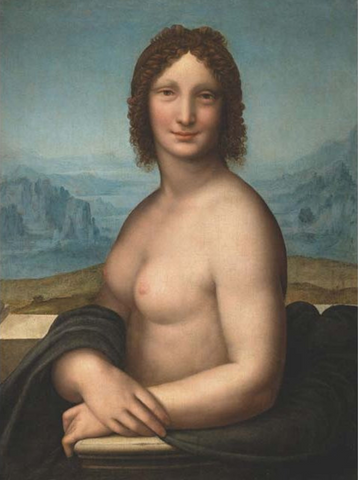
Monna Vanna, a nude version of Mona Lisa, Painted by Salaì
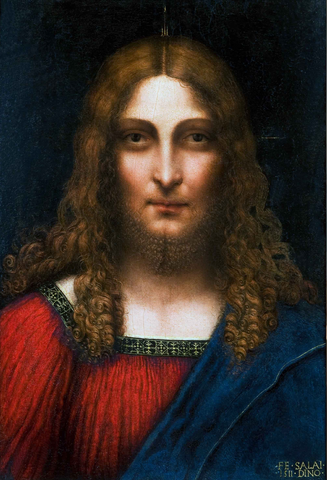
Head of Christ the Redeemer painted by Salaì
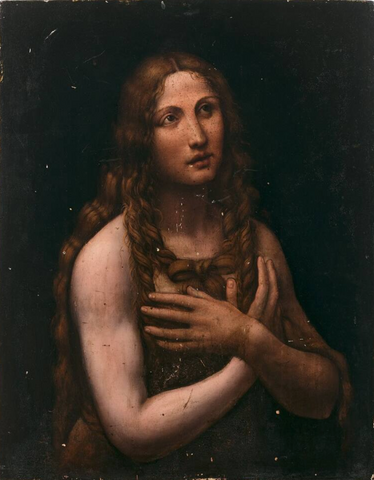
The Penitent Magdalene, painted by Salaì
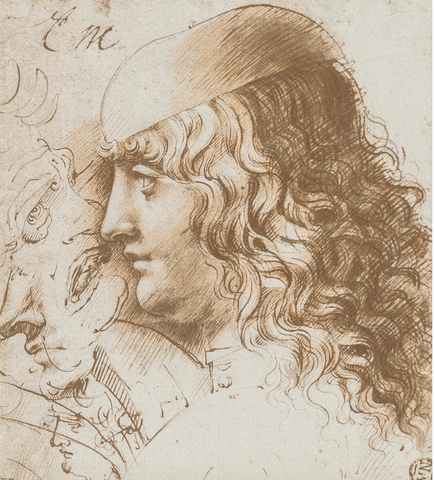
Study of Salaì by Leonardi da Vinci
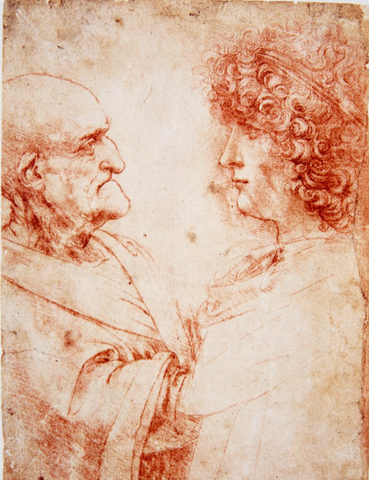
An old man and a young man. The young man represents Giacomo Salaì. Drawing a la sanguine by Leonardo da Vinci.

